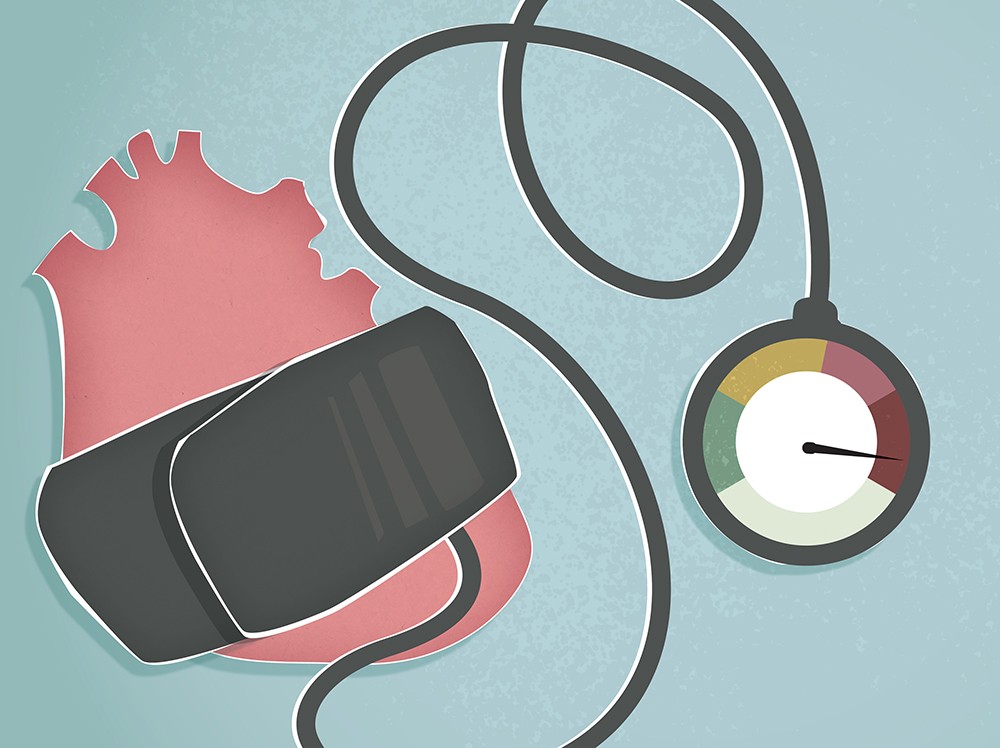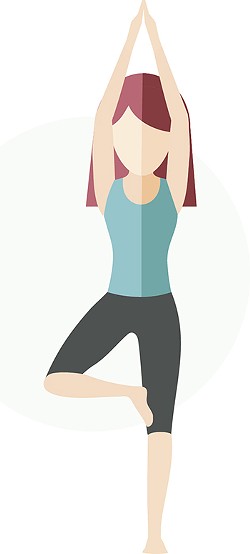Two years ago, Mark Lanz, a 65-year-old Vietnam veteran from Spokane, was diagnosed with high blood pressure. "It wasn't something I was even aware of," Lanz says. During a routine exam with his primary care physician, Lanz had a blood pressure reading of 160/100 — clearly hypertensive. Lanz had no symptoms that he could recall: "It's like that story about cooking a frog. If you put him in a pan and slowly heat the water, he'll never notice it."
Blood pressure is called the silent killer for a reason — like Lanz, most people never experience symptoms. But high blood pressure can lead to a myriad of health problems, including heart attack and stroke, as well as kidney disease, eye disease and sexual dysfunction.
That's why those blood pressure readings in your doctor's office are so important. But experts caution that a single reading in the office does not really create a full picture of your heart health. That's because blood pressure varies so much — it can change related to whether you've been sick or are in pain, how well you've slept, what you've been eating, and even how nervous you are about having your blood pressure measured.
Like Lanz, says family practice physician Douglas Hammerstrom, many of his patients discover their hypertension during a routine visit to his office, or after an emergency room visit. The advent of home blood pressure monitors has made keeping track of a patient's hypertension much easier.
"The widespread availability of those monitors has been the biggest boon to helping patients manage their high blood pressure," Hammerstrom says.
"The one caveat is that the patients need to bring their monitors into their doctor's office to be checked against the clinical monitor, which is more reliable than an electronic cuff."
Getting back to normal
The first step for patients who want to reduce high blood pressure is to take an honest look at their lifestyle. Despite all the momentous achievements in cardiology and pharmacology, "nothing will replace having the patient's involvement in weight loss, exercise and salt restriction," says Providence cardiologist Guy Katz.
Hammerstrom agrees. "It depends a great deal on how reliable [patients] are and how committed they are to getting better."
At the VA, Lanz takes part in a peer counseling program designed to help patients make lifestyle changes, like achieving a healthy weight or quitting smoking, It's part of a program to take "a holistic approach to hypertension as it relates to other diseases, such as diabetes," says Peer Support group leader Matt Hoff. "We help people understand what's in it for them... say we have a vet who likes to go fishing, but he can't get out in the woods anymore because of his health. We set goals for him."
Emphasizing a diet that is high in fruits and veggies — but more important, low in salt — is key to reducing blood pressure. The DASH (Dietary Approaches to Stop Hypertension) diet includes:
• six daily servings of grains;
• four to five servings each of fruits and vegetables;
• two to three servings of dairy;
• six or fewer servings of lean protein;
• two to three servings of oils;
• four to five servings of nuts, seeds and legumes per week;
• five or fewer servings of sweets per week.
Additionally, and perhaps most important, people with hypertension need to limit salt intake to no more than 2,300 milligrams per day for the standard DASH diet, 1,500 for the low-sodium version. The American Heart Association estimates that the average American diet contains 3,400 or more milligrams of sodium daily.
Exercising for at least 30 minutes most days of the week is also key, but it doesn't mean you need to join a gym. Those 30 minutes can be broken down into 10-minute chunks. "You have to challenge the heart to protect the heart," says WSU exercise researcher Susan Marsh, who notes that resistance exercise is often neglected. You don't have to lift weights; just moving items from shelves or loading and unloading groceries offers benefits.
The National Center for Complementary and Integrative Health compiled research on hypertension and alternative treatment approaches and found limited evidence that yoga, qi gong and Transcendental Meditation may offer some benefit in reducing high blood pressure. As far as possible benefits from supplements and foods such as cocoa, coenzyme Q10, fish oil and garlic go, the report notes, "The evidence is very limited and sometimes conflicting."
Medications are the next step toward controlling blood pressure. Getting the best combination can take some time. Among the most commonly prescribed are diuretics that help the body shed excess water and sodium; beta-blockers which slow the heart rate, reducing the heart's workload; and ACE inhibitors and ARBs which help to relax the arteries and allow blood to flow more freely.
For a small subset of patients, surgical intervention may offer help. In people whose blood pressure is elevated by narrowing of the arteries that supply the kidney with blood, or in cases in which there's a plaque-like build up in the renal arteries, treatment with renal angioplasty and stenting is possible. Studies of renal denervation in patients whose blood pressure doesn't respond to other treatment have been disappointing, says cardiologist Katz.
Lanz is grateful to his medical team — his primary care physician, a pharmacist and a nurse — at the VA for helping him get his hypertension under control. Originally prescribed an ACE inhibitor called lisinopril, Lanz developed a dry cough, which is a common side effect. He was switched to a calcium channel blocker. "That did the trick," he says. When his home monitor showed his blood pressure was beginning to rise, his team at the VA was able to download and record his data, adjusting his medication accordingly. Lanz, who works at the VA as a nuclear medicine technician, praises the comprehensive approach his care team took toward controlling his high blood pressure: "What they do for us vets is phenomenal." ♦
Understanding Exercise
WSU researcher Susan Marsh's lab mice have gym privileges. Researchers at her lab study the effects of exercise on the hearts of mice who have high blood pressure or diabetes.
She says the field of mouse heart research has revealed intriguing possibilities about exercise. For example, a single bout of exercise at a "comfortable running speed" protects mice against heart injury for up to 10 days. The research isn't really replicable in humans. "You can't predict precisely when someone is going to have a heart attack and tell them to exercise 10 days before that," says Marsh. "The question always comes, 'Then does that mean I only have to exercise three days a month?' The answer to that, I think, is no."
Although Marsh says there's ample evidence that exercise is absolutely beneficial to the heart, exactly how it works isn't clear. Researchers once thought that elevated body heat that arose with exercise was the key. That turned out not to be the case, says Marsh. The effect of exercise on free radicals in the body also turned out to be a non-starter: "There's a lot of evidence showing that [exercise] does help, that it does work... but how is one of those questions that is still really hanging out there." (ANNE McGREGOR)
Do we know the best numbers?
Hypertension is now defined as readings that are persistently at or above 140/90, so treatment focuses on reducing blood pressure to that level.
Results of a recent trial called the Systolic Blood Pressure Intervention Trial (SPRINT), reported in the New England Journal of Medicine, questioned whether that's low enough. "The appropriate targets for blood-pressure lowering have long been debated," the Journal states, but the bottom line seemed to be that patients encouraged to work toward a lower BP measurement (less than 120/80) had a significantly lower risk of fatal and non-fatal cardiovascular events and death from any cause." (ANNE McGREGOR)

















